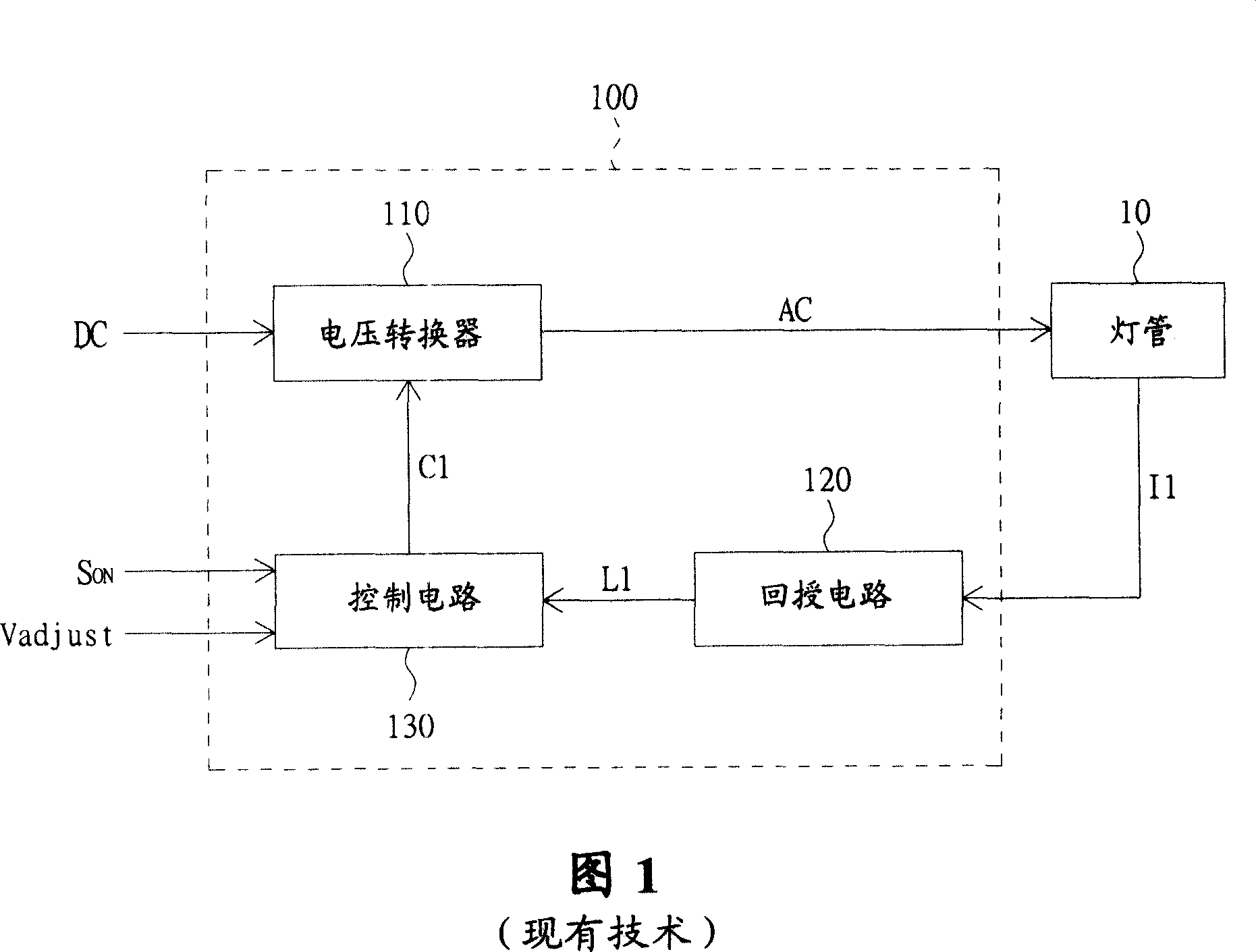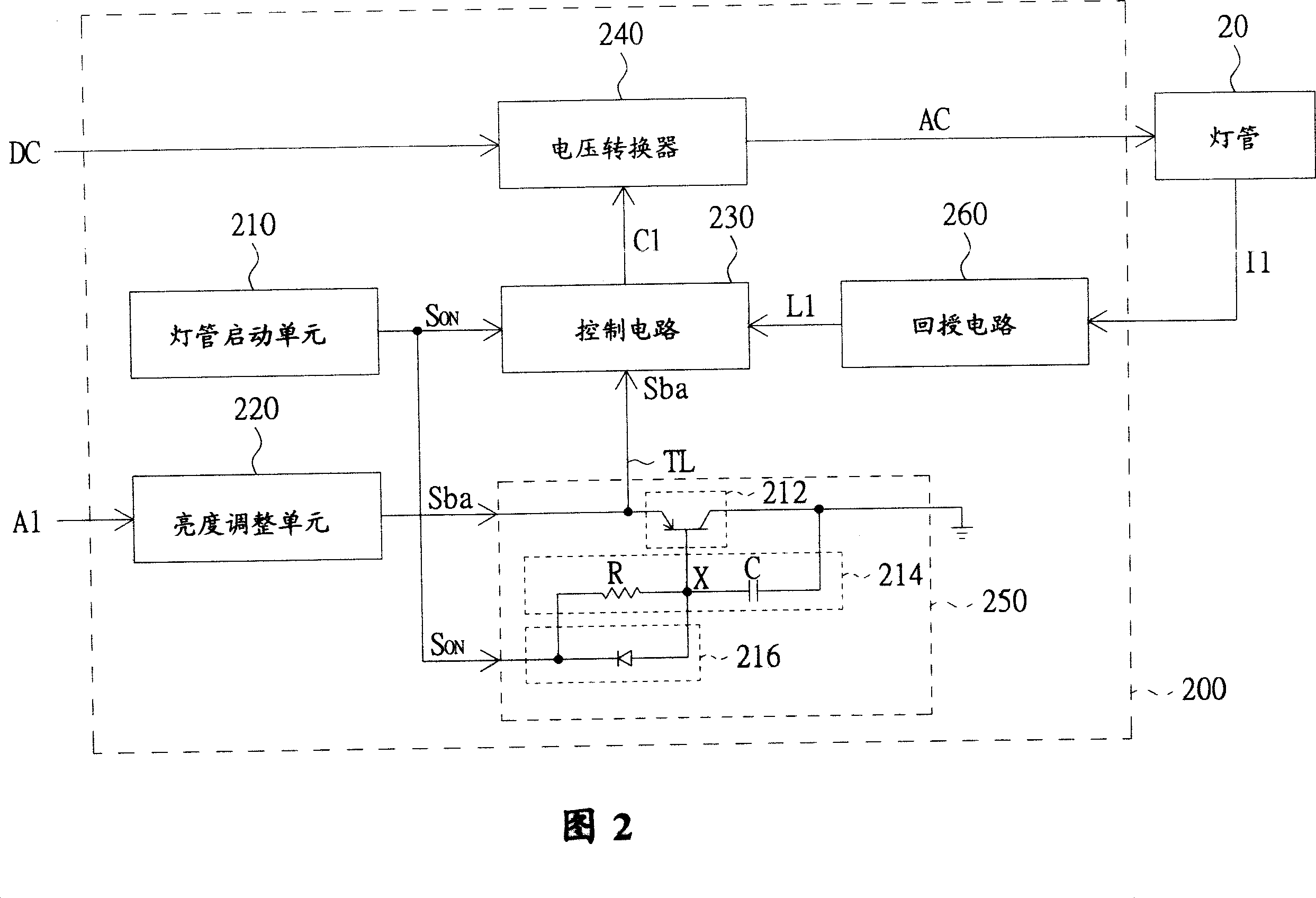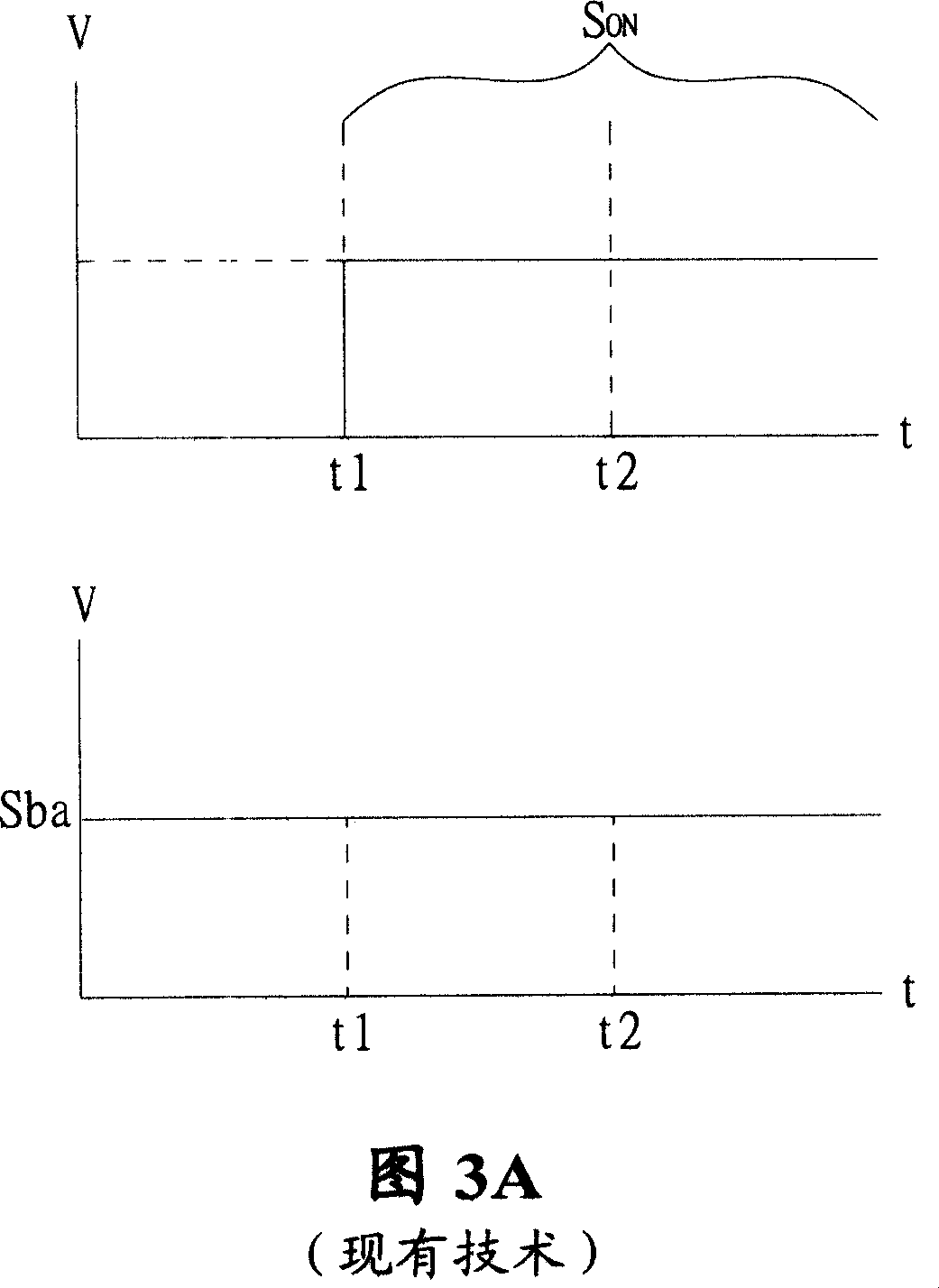Power supply system for cold cathode tube and light tube start method
A technology of a power supply system and a cold cathode tube, which is applied in the directions of electric light sources, light sources, electrical components, etc., can solve the problems of the power supply system 100 stopping working, the working cycle of the cold cathode tube exceeding the limit, etc.
- Summary
- Abstract
- Description
- Claims
- Application Information
AI Technical Summary
Problems solved by technology
Method used
Image
Examples
Embodiment Construction
[0016] Please refer to FIG. 2 , which is a circuit block diagram of a cold cathode tube power supply system according to a preferred embodiment of the present invention. The cold cathode tube power supply system 200 includes a brightness adjustment unit 220 , a control circuit 230 , a voltage converter 240 and a brightness control unit 250 . The brightness adjustment unit 220 is used to output the brightness adjustment signal Sba, the brightness adjustment signal Sba is transmitted to the control circuit 230 through the brightness control unit 250, and the brightness control unit 250 also receives the lighting signal S ON .
[0017] Please refer to Fig. 3B at the same time, which shows the lighting signal S of the preferred embodiment of the present invention ON and the waveform diagram of the brightness adjustment signal Sba. The brightness adjustment signal Sba includes a lower brightness signal and a higher brightness signal, that is, a first brightness signal S1 and a se...
PUM
 Login to View More
Login to View More Abstract
Description
Claims
Application Information
 Login to View More
Login to View More - R&D
- Intellectual Property
- Life Sciences
- Materials
- Tech Scout
- Unparalleled Data Quality
- Higher Quality Content
- 60% Fewer Hallucinations
Browse by: Latest US Patents, China's latest patents, Technical Efficacy Thesaurus, Application Domain, Technology Topic, Popular Technical Reports.
© 2025 PatSnap. All rights reserved.Legal|Privacy policy|Modern Slavery Act Transparency Statement|Sitemap|About US| Contact US: help@patsnap.com



